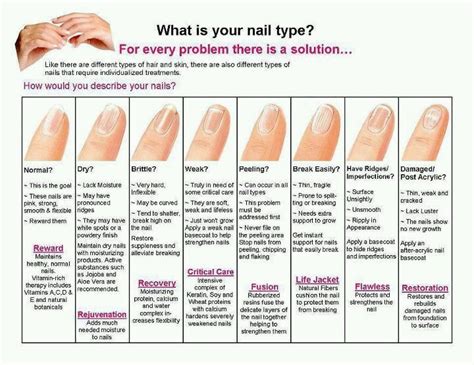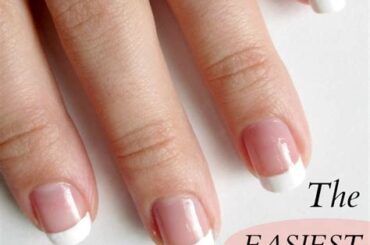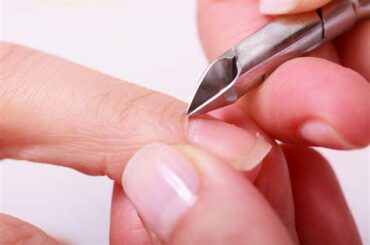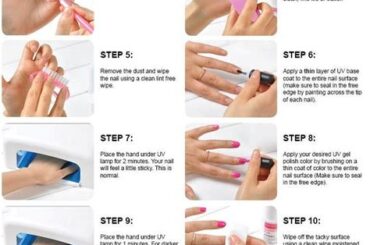Expert tips for understanding and treating common nail problems, including brittle nails, fungus, and psoriasis. Learn preventive measures and natural remedies.
Understanding Nail Anatomy
Understanding Nail Anatomy
The nail anatomy is a complex structure that plays a crucial role in protecting the fingertips and toes. It is composed of different parts including the nail plate, nail bed, cuticle, and lunula. The nail plate is the hard, keratinized portion of the nail. It is the visible part of the nail and its main function is to provide protection to the fingertips and toes.
The nail bed is the skin beneath the nail plate and is essential for the production of new nail cells. The cuticle serves as a protective barrier for the nail matrix, which is responsible for the growth of the nail. Finally, the lunula is the white, half-moon shaped area located at the base of the nail. Understanding the nail anatomy is important in maintaining overall nail health and preventing common nail problems.
Being aware of the different components of the nail anatomy can help individuals identify abnormalities and seek appropriate treatment. It is also crucial for nail technicians and professionals in the beauty industry to have a comprehensive understanding of nail anatomy in order to provide proper care and maintenance for their clients.
Identifying Common Nail Problems
Identifying Common Nail Problems
Common nail problems are not uncommon, and many people struggle with issues such as brittle nails, nail fungus, discoloration, and psoriasis. Identifying these problems early on can help in getting the right treatment and preventing further damage to the nails.
Brittle nails are a common problem that many people face. This condition can be caused by a variety of factors such as frequent exposure to water, harsh chemicals, or nutritional deficiencies. Brittle nails are prone to breakage and need proper care and attention to prevent them from becoming worse.
Nail fungus is another common issue that affects many individuals. This condition is characterized by thick, yellow, or discolored nails, and can be quite stubborn to treat. Identifying the symptoms early on can help in seeking the right treatment and preventing the spread of the infection to other nails.
Causes of Brittle Nails
Brittle nails can be a frustrating issue that many people deal with. There are several common causes of brittle nails that it’s important to be aware of in order to find a solution. One of the main factors that can lead to brittle nails is excessive exposure to water and chemicals. Constantly immersing your nails in water or using harsh chemicals without protection can weaken the nails and cause them to become brittle.
Another cause of brittle nails is a lack of essential nutrients. A diet that is deficient in vitamins and minerals, such as biotin, vitamin A, and calcium, can result in weak and brittle nails. It’s important to ensure that you are consuming a balanced diet and taking any necessary supplements to support nail health.
Furthermore, repeated trauma and physical damage to the nails can also lead to brittleness. This includes activities such as using your nails to open containers, typing on a keyboard with excessive force, or engaging in activities that put repeated pressure on the nails. Protecting your nails from physical stress and trauma is essential for maintaining their strength and preventing brittleness.
Preventive Measures for Nail Breakage
Preventive Measures for Nail Breakage
Brittle nails can be a frustrating problem, leading to frequent breakage and peeling. To prevent nail breakage, it’s important to take proactive measures to strengthen and protect your nails. One of the main causes of nail breakage is dehydration, so moisturizing your nails and cuticles is essential for maintaining their strength and flexibility.
Additionally, wearing gloves while performing household chores or any activities that may expose your nails to harsh chemicals or excessive moisture can help prevent breakage. Trimming and shaping your nails regularly, and avoiding harsh nail treatments such as acrylics or gels, can also contribute to preventing nail breakage.
Following a balanced diet rich in vitamins and minerals essential for nail health, such as biotin and vitamin E, can also help prevent nail breakage. Making these preventive measures a part of your regular nail care routine can significantly reduce the risk of brittle nails and breakage, allowing you to maintain healthy and strong nails.
Treating Nail Fungus
Nail fungus, also known as onychomycosis, is a common condition that can cause the nails to become discolored, thick, and brittle. It is often caused by a fungal infection that affects the nail bed and can be quite difficult to treat. The good news is that there are several treatments available to help combat nail fungus and restore the health of your nails.
One of the most common treatments for nail fungus is the use of antifungal medications, either in the form of topical creams or oral prescriptions. These medications work by targeting the fungus and killing it, allowing the new nail to grow in healthy and free of infection. Another effective treatment is laser therapy, which uses concentrated beams of light to destroy the fungus without causing damage to the surrounding skin or nail.
In addition to medications and laser therapy, there are also some natural remedies that can help to treat nail fungus. These include essential oils like tea tree oil and coconut oil, as well as home remedies like vinegar or baking soda soaks. While these remedies may not be as effective as prescription medications, they can still provide some relief and may be worth trying for those who prefer a more natural approach to treatment.
Natural Remedies for Nail Discoloration
If you’re struggling with nail discoloration, you’re not alone. This common issue can be caused by a variety of factors, including fungal infections, trauma to the nail, or even certain health conditions. The good news is that there are several natural remedies that can help improve the appearance of discolored nails.
One effective remedy is to soak the affected nails in a mixture of lemon juice and warm water . The acidic nature of lemon juice can help lighten the nails and reduce discoloration over time. Alternatively, you can create a paste using baking soda and hydrogen peroxide and apply it to the nails for a few minutes before rinsing off. This can also help to reduce discoloration and brighten the nails.
In addition to these remedies, it’s important to practice good nail hygiene and avoid behaviors that may worsen discoloration. This includes keeping the nails clean and dry, wearing protective gloves when using harsh chemicals, and avoiding the use of nail polish for an extended period of time. By incorporating these natural remedies and maintaining healthy nail habits, you can improve the appearance of your nails and promote overall nail health.
Managing Nail Psoriasis
Psoriasis is a chronic autoimmune condition that can affect the skin, joints, and nails. When it comes to managing nail psoriasis, it’s important to first understand the symptoms and causes. Common symptoms of nail psoriasis include pitting, thickening, and discoloration of the nails. These changes can be not only unsightly but also painful and affect the overall quality of life. The exact cause of nail psoriasis is not fully understood, but it is believed to be related to an overactive immune system.
One of the key aspects of managing nail psoriasis is to seek treatment from a dermatologist. They can provide a proper diagnosis and recommend a suitable treatment plan. Topical treatments such as corticosteroids and retinoids are commonly used to reduce inflammation and promote normal nail growth. In severe cases, oral medications or biologic injections may be necessary to manage the symptoms effectively.
In addition to medical treatment, there are also lifestyle changes and home remedies that can help in managing nail psoriasis. This includes keeping the nails trimmed and clean to prevent further irritation, using moisturizers to keep the nails and surrounding skin hydrated, and avoiding harsh chemicals and tight-fitting shoes that can exacerbate the condition. It’s important for individuals with nail psoriasis to be proactive in managing their condition and seek support from healthcare professionals to improve their overall nail health.
Moisturizing and Hydrating Nail Care
Moisturizing and hydrating nail care is essential for maintaining the health and strength of our nails. Our nails, just like our skin, need hydration to stay strong and free from damage. Lack of moisture can lead to brittle and dry nails, making them more prone to breakage and chipping. Incorporating a regular moisturizing routine into your nail care regimen is crucial for achieving strong and healthy nails.
One of the best ways to moisturize and hydrate your nails is by using nourishing oils such as jojoba oil, coconut oil, or almond oil. These oils are rich in vitamins and nutrients that can penetrate the nail plate and provide deep hydration. Simply massage a small amount of oil into your nails and cuticles each night before bed to keep them moisturized and healthy.
In addition to oils, using a quality hand and nail cream can also help to keep nails hydrated. Look for a cream that contains ingredients like shea butter, glycerin, and vitamin E to lock in moisture and prevent dryness. Applying hand cream throughout the day, especially after washing your hands, can help to maintain nail hydration and prevent cracking and peeling.
Professional Nail Care Tips
When it comes to maintaining healthy and beautiful nails, it’s important to follow some professional nail care tips to keep them in top condition. One of the best tips for nail care is to regularly moisturize and hydrate the nails and the skin around them. This can be done by using a moisturizing lotion or oil on a daily basis to keep the nails from becoming brittle and prone to breakage.
Another important tip for nail care is to avoid using your nails as tools for everyday tasks. This means not using them to open cans, peel off stickers, or scrape off labels. Using your nails in this way can cause them to become weakened and more susceptible to damage. It’s also important to make sure your nails are trimmed and shaped regularly to prevent them from breaking or splitting.
Lastly, it’s crucial to practice good hygiene when it comes to nail care. This includes keeping your nails clean and dry, as moisture can lead to nail fungus and other infections. It’s also important to avoid biting or picking at your nails, as this can cause damage and increase the risk of infection. By following these professional nail care tips, you can keep your nails looking and feeling their best.
Frequently Asked Questions
What are some common nail health issues?
Some common nail health issues include brittleness, discoloration, ridges, and fungal infections.
How can I prevent brittle nails?
To prevent brittle nails, keep your nails trimmed, moisturize regularly, and wear gloves when doing household chores.
What causes nail discoloration?
Nail discoloration can be caused by fungal infections, trauma, or certain medications.
What are some natural remedies for nail fungus?
Natural remedies for nail fungus include tea tree oil, coconut oil, and apple cider vinegar soaks.
How can I strengthen my nails?
You can strengthen your nails by taking biotin supplements, using nail hardeners, and maintaining a balanced diet rich in vitamins and minerals.
When should I seek medical attention for nail issues?
You should seek medical attention if you experience severe pain, bleeding, or sudden changes in your nails’ appearance, as these could indicate underlying health problems.
What are some common misconceptions about nail health?
Some common misconceptions about nail health include the belief that frequent manicures weaken the nails and that vitamin deficiencies are always the cause of nail problems.





